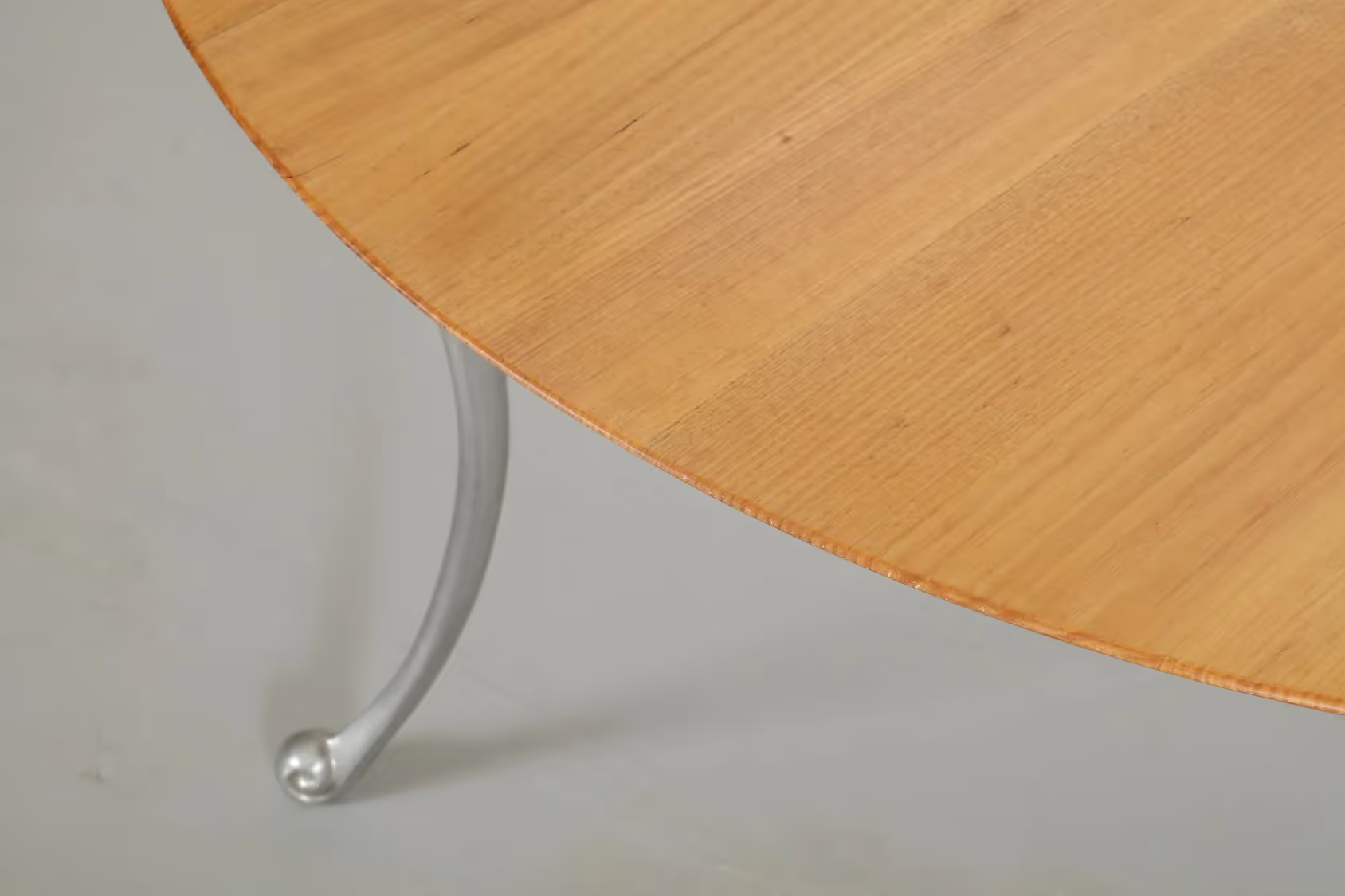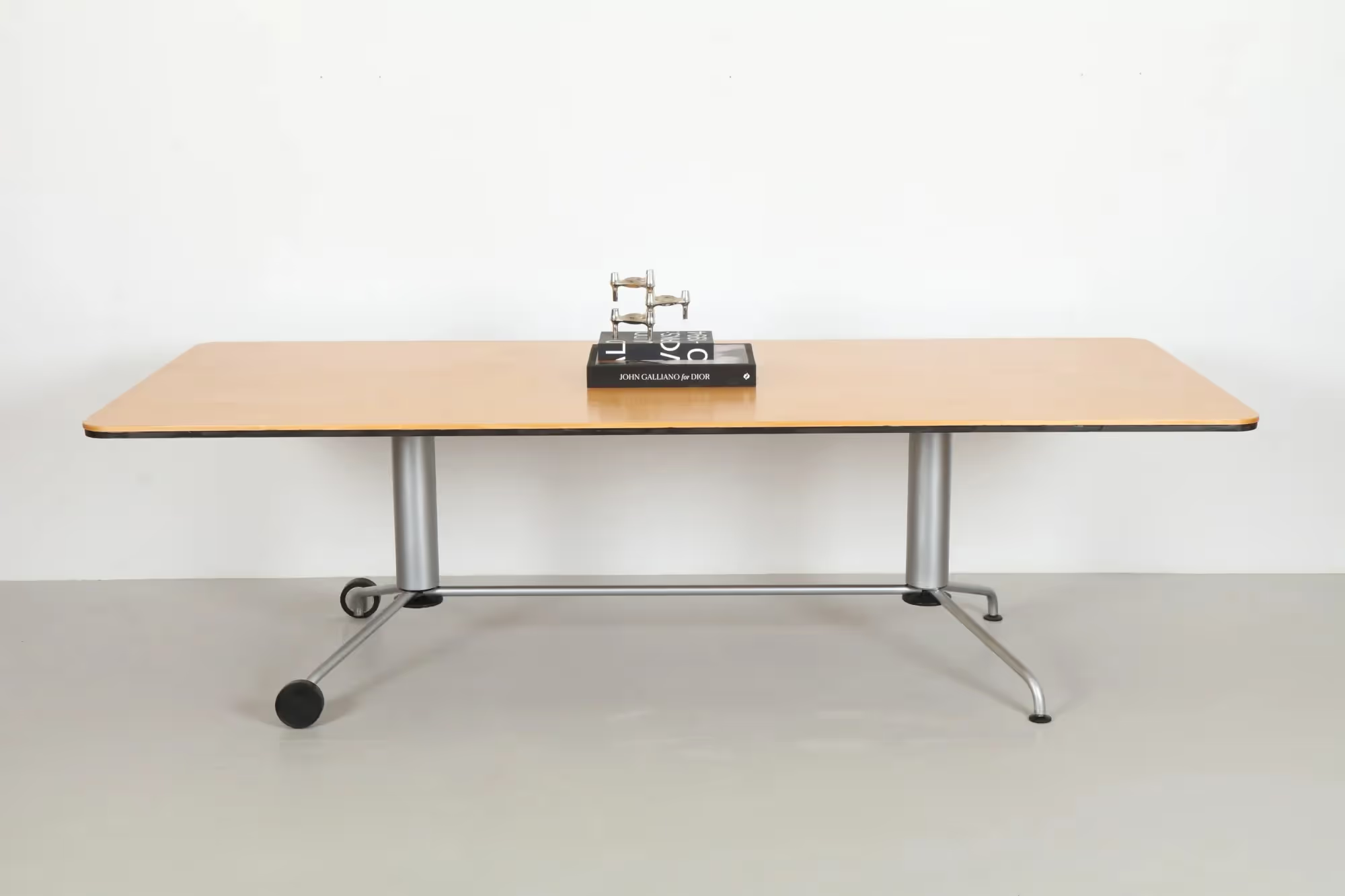Dynamic Matthew von Sturmer 'Koru' Dining Table
Matthew von Sturmer is a celebrated New Zealand designer, maker and artist. He began as a contemporary jeweller and over time has developed his practice to include decorative objects, furniture and large art installations. Memorable projects include the much loved public benches in Ponsonby and his 'fluke' chair, which resides in the permanent collect of Te Papa Tongarewa.
We love this dining table which features the designer's signature curved forms and a combination of honest materials – timber and aluminium. Outward curving 'koru' legs support a round table top which shows off the stunning timber grain. Combine this piece with a bold set of chairs to complete a memorable dining suite.
Image: MVS public seating in Ponsonby / photograph by Trelise von Sturmer
Each piece is checked and carefully hand restored at our Kingsland studio workshop. Our focus is preserving the character and patina of the design while ensuring it displays beautifully in a contemporary interior...
Each piece is checked and carefully restored at our Kingsland studio workshop. Our focus is preserving the character and patina of the design while ensuring it displays beautifully in a contemporary interior.
- Joints checked and reglued
- Timber cleaned and stains removed
- Veneer repairs if needed
- Surfaces polished / refinished
Our full collection is showcased at our Eden Terrace gallery. We have parking available beside the building and would love to see you.
All pieces are available for collection in person from our Eden Terrace gallery. We are also happy to provide a quote for delivery throughout New Zealand.
Please enquire for delivery options.
Dynamic Matthew von Sturmer 'Koru' Dining Table
GOOD FORM, 86 Newton Rd, Eden Terrace, Auckland.
Matthew von Sturmer is a renowned New Zealand designer and craftsperson. Born in 1967, he began his creative career as a contemporary jeweller in the late 1980s. By the 90s von Sturmer was crafting a range of decorative objects and architectural fittings from copper, bronze, brass, and aluminium.
In 1990 Matthew designed and crafted his first chair, consisting of a three-legged, skeletal frame in aluminium, with a wooden back and leather seat. In 1991 he produced a version of this chair with a resin backrest filled with pāua shells called the ‘Fluke’ chair. This chair is now in the permanent collection of Te Papa Tongarewa.
Much of the imagery in von Sturmer's work relates to New Zealand's place in the Pacific, and his own love of fishing and the sea. His method of working testifies, however, to his belief that "The value of a piece depends on the equality between the idea, materials and (fabrication) process.”
Von Sturmer describes his work as "very process oriented", and believes it is essential to retain control over every stage of production. "If I worked purely as a designer it wouldn't work," he says. "There are subtleties at each stage which would be lost, were I not involved in the fabrication and finishing of a piece."
He is interested in transferring the special qualities of a handcrafted or artistic object into small-scale production. "An object carries information that is transferred to it from its maker. A lot of objects have had that element negated, and they end up being banal, because there has not been a single person with complete control over their production”.
Career highlights include working as a lead artist with Warren and Mahoney and Peter Boyd on the MIT Manukau and Transport Interchange. A project with Tara Iti (golf club) across four years on our bronze hardware. Collaborating with a Japanese architectural company on a boutique hotel and sending some handles away for a Paul Smith shop in Berlin.
When he’s not designing, Matthew enjoys spending time on the water, either surfing or fly fishing. His work is inspired by the harsh lines of the landscape, patterns in the sand, currents in the water, and textures of Waiheke Island, where he currently lives.
Sources:
- 1990 article by Debra Millar
- Urbis article ‘Island Metal’ by Camille Khouri

.svg)
.svg)







.avif)


